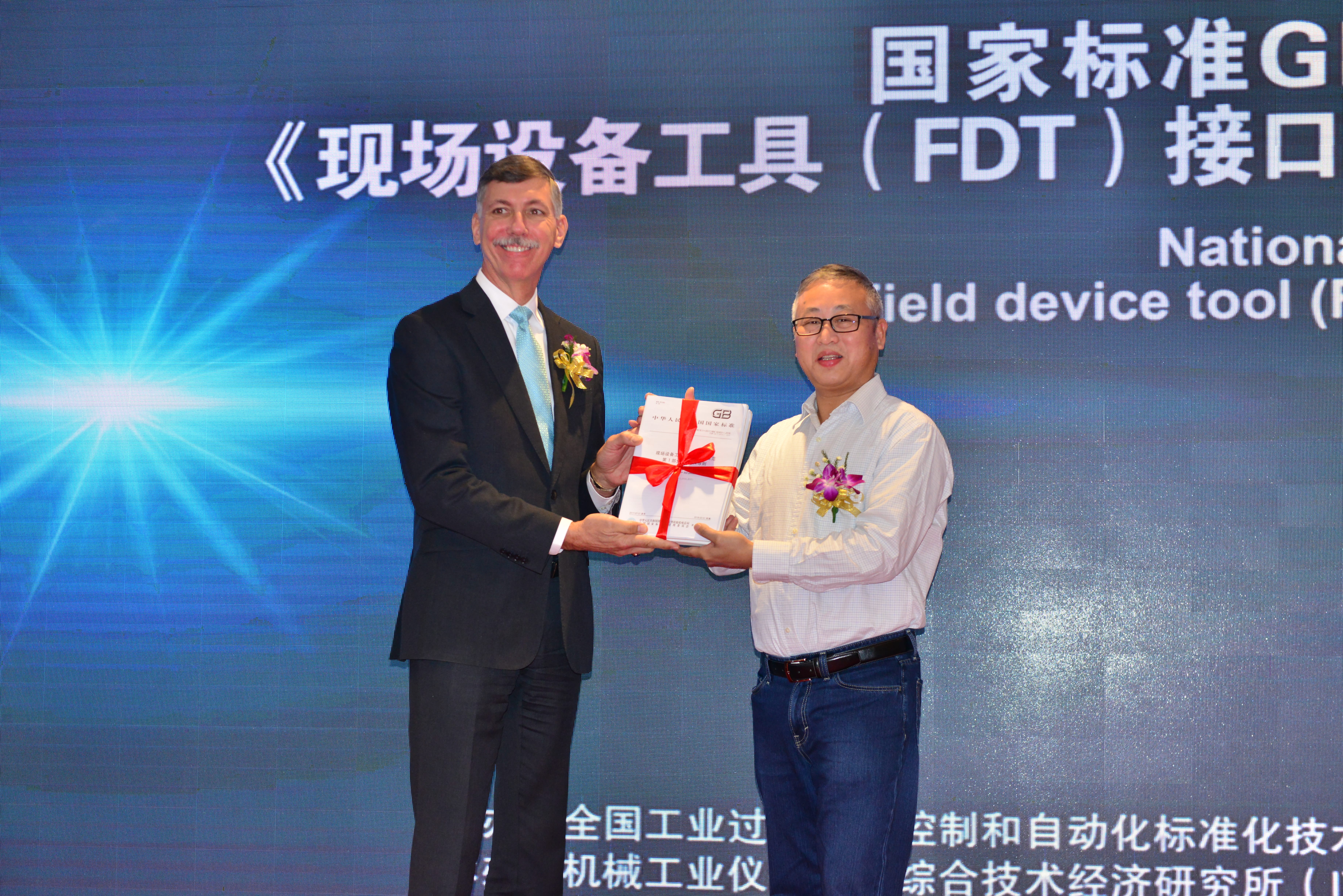
FDT Group™ today announced that a cooperative initiative undertaken by China’s National TC124 On Industrial Process Measurement, Control and Automation of SAC (TC124/SAC); Instrumentation Technology and Economy Institute, P.R. China (ITEI); China Instrument Manufacturer Association (CIMA); Southwest University; and the FDT Professional Committee has resulted in an national standard for device integration based on industry-leading FDT® 2.0 technology.
The Chinese GB/T 29618-2017 Field Device Tool (FDT) Interface Specification incorporates the latest technology enhancements by the FDT Group, an international non-profit corporation dedicated to providing an open standard for industrial enterprise-wide network and asset integration. The updated standard was announced at a joint organizational meeting held on November 15 in Beijing, China.
FDT is transforming the way industrial automation architectures connect and communicate sensor to cloud. Ongoing advancement of this technology is leveraging major developments like the Industrial Internet of Things (IIoT) and Industrie 4.0 to enable end users to realize the true potential of decentralization, interoperability and integration, as well as a unified view of all data and functions across process, factory and hybrid control applications.
The FDT 2.0 specification, employing a future-proof architecture based on Microsoft .NET technology, offers all the properties needed by modern software right up to web- and client/server-based systems. Release of the GB/T 29618-2017 standard incorporating FDT 2.0 will better guide the integration and application of various field buses and devices, and help promote the widespread implementation of standards-based automation solutions.
According to Tian Zhaoying, vice director of the 2nd Industry Department, Standardization Administration, People’s Republic of China (SAP), standardization is an important requirement for intelligent manufacturing. “The purpose of our ongoing efforts is to enable the effective implementation of advanced industrial standards while promoting social and economic development within China,” he said. “The Chinese FDT Professional Committee and ITEI actively assisted the development of FDT so this advanced technology could be widely implemented by our country’s manufacturing community.”
Mei Ke, vice president of ITEI, believes the updated FDT 2.0 specification will meet current requirements for standardizing communication and configuration interfaces between field devices and host systems, and is a key tool for the integration of intelligent manufacturing centers.
Li Yueguang, vice president of CIMA, also noted the technical advantages of FDT 2.0 in system integration and interconnection, and expressed hope that domestic enterprises in China would quickly integrate compliant solutions as part of their smart manufacturing strategies.
FDT Group Managing Director Glenn Schulz expressed gratitude for establishment of the Chinese national standard for device integration technology. “There is growing demand for FDT-enabled solutions employing FDT 2.0 technology in developing industrial markets around the world,” Schulz said. “Based on robust .NET technology, the FDT 2.0 standard maintains proven FDT heritage, but includes numerous performance enhancements while ensuring backward compatibility with our existing installed base.”
FDT was built to support a comprehensive, open architecture for the connected world of industrial automation networks and assets. The backbone architecture, standardized independent of industrial automation networks, allows for a comprehensive networking integration model allowing for seamless integration mapping to connect intelligent assets relaying device-specific diagnostics data enterprise-wide.
About China Instrument Manufacturer Association FDT Professional Committee
The China FDT Organization was established in 2010 and joined the China Instrument Industry Association in 2011. The FDT Working Group supports Chinese enterprises in independently developing innovative products conforming to the FDT standard. The objective is to effectively promote the technological advancement of the automation industry in China and enhance the competitiveness of the country’s automation technologies. The China FDT Organization is responsible for organized technical promotion, on-site exchanges, user forums and other activities. It is also actively involved in standards formulation, and in 2013 released the first FDT national standards.
###